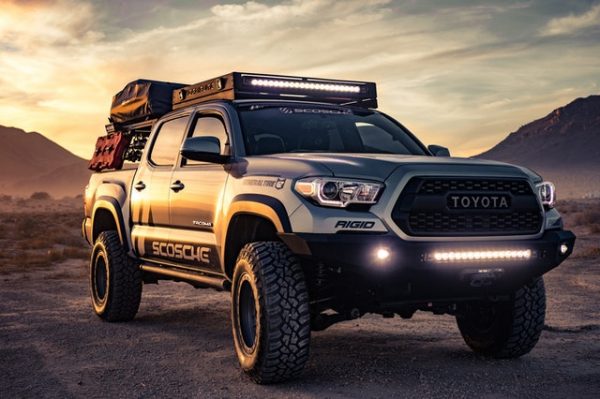It’s still easy to find the reason for jolts at highway speeds, even though today’s car suspensions have an ever-expanding variety of components. Most of the reasons are simply suspension tuning, and only a few suspension components can be the problem.
Poor tire balance is the number one cause of cars shaking at speeds above 70 mph. Other contributing factors include poor wheel alignment, faulty tie rods or ball joints, broken wheels, and worn control arm bushings.
Then, after detailing how to resolve or test the problem and the associated costs, we’ll move on to the most likely reason and conclude with the least likely.
Bad tire balance
Although most auto manufacturers recommend balancing and rotating your tires every 5,000 to 7,000 miles, most people ignore this advice. Most owners, however, only balance their tires when they replace them. And the main reason it’s wrong is that the balance weights can come off and the balance of the tires can be affected when the tread degrades.
So if it’s been a while since you’ve had your tires rotated, you should start there. Also, ask the technician to check the tie rods and ball joints while your vehicle is being repaired over the air in the shop. Since it only takes a few minutes, it shouldn’t be a problem.
Costs to balance the tires will likely be anywhere from €30-€50 for all four tires. However, the price can vary greatly depending on where you live and can be as high as €100.
bad wheel alignment
Before you align the car wheels, you should first check the ball joints and ball joints to make sure the tire balance is accurate. It doesn’t hurt to test the tie rods properly to avoid wasting money, even if I’m sure the alignment shop will find them faulty. It is vital to remember that potholes, off-road driving and high curbs can cause wheels to be misaligned.
You may also notice that the steering wheel is tilted when traveling in a straight line when the wheels are out of alignment. Driving in slow curves with a high steering angle can also cause the vehicle to pull to one side and cause tire noise. The only indication is uneven tire wear, although it won’t show up right away.
Since the tires will wear out much faster and you may notice vibrations, it is crucial to have them aligned every couple of years. You now have two invoices instead of just one. Also, there’s not much incentive to avoid wheel alignments because they typically cost between €50 and €60.
bad tie rods
At the end of the steering rack are tie rods that are attached to the wheel hub. These are just ball joints, except when you turn the steering wheel, they convert linear action into rotary motion. You will probably notice some play in the steering wheel when the tie rod ball is neglected. And at highway speeds, that’s what’s producing the shaking.
Also, tie rods don’t have a maintenance plan, so unless you do routine inspections, you won’t realize it’s time to replace them until these symptoms show up. Also, because increased tire wear is inevitable, it’s in your best interest to replace your tires.
Since replacing a tie rod is not difficult, the cost of labor and components is usually around $100. However, you’ll also need to spend an extra $50-$60 on wheel alignment. Although it is very simple, I would not recommend replacing them at home. However, you can check if they are still in excellent condition.
How to Check Tie Rods
one of the front wheels is raised.
Take the tire and shake it vigorously from left to right.
The tie rod is broken if you notice play in the wheel.
The opposite wheel should get the same procedure.
worn ball joints
The ends of the control arms include ball joints that move the steering wheel up and down while keeping it straight. And just like with braces, the ball inside loosens over time, causing the wheel to move up and down. This will naturally cause jolts and vibrations when driving, clunks, and erratic steering.
One of the more expensive solutions on our list is to replace the ball joints, although the cost mostly depends on your car. This is because most of today’s cars need complete control arm replacement, older vehicles only require ball joint replacement.
As a result, a significant price difference between a control arm and a ball joint can range from €150 to €300. Also, you should budget around €100 for labor. The final amount is now between €120 and €400. Without a good car lift, fixing a ball joint at home isn’t that simple either, but you can test them just as quickly as tie rods by following this guide.
How to check kneecaps
one of the front wheels is raised.
This time, put both hands on the wheel, one on the bottom and one on the top.
Then separately press the top and bottom part in and out; if you feel any slope, the kneecap is damaged.
Then do the same procedure with the opposite wheel.
damaged wheels
Since we’ve already discussed tire balance, damaged wheels are a fairly apparent likely reason. Your wheels, however, are probably chipped or bent if you recently braked a wheel or hit a pothole. Even if a small curve isn’t detectable with the naked eye, it’s more than enough to create vibrations at speeds over 70 mph.
My biggest piece of advice in this situation is to get a new or used wheel from a reputable supplier. While some companies can straighten and weld wheels, buying a used wheel is considerably safer and probably not much more expensive.
control arm bushings
The purpose of the control arm bushings is to dampen vibrations, collisions, and sudden changes in direction. However, since they are made of rubber, bushings will eventually degrade, split, harden, and stop performing as intended. Vibrations and steering lean are a given when it happens. You may also hear clanking noises and the steering wheel may start to jerk.
Unfortunately, control arm bushing replacement isn’t exactly cheap; For today’s cars, components typically cost between €100 and €150. However, older car hubs are around €30 a pair. Regarding labor, depending on the vehicle and where you live, you should expect to pay between €130 and €200. Finally, it is difficult to determine if the bushings are damaged. Therefore, it is essential that you have your suspension checked before purchasing any component.
When your car shakes, is it safe to drive?
Yes, driving while your vehicle is shaking is often safe as the possible reasons will not turn into a dangerous scenario any time soon. To prevent further damage to the suspension, it’s ideal if you fix whatever the problem is. Also, driving the car for longer distances is riskier, although up to 1,000 miles is safe.
Why does my car shake slightly when parking?
Your car likely has a worn engine or gearbox mount if it just rattles while stopping and going. This makes the engine shake too much, which is felt inside the cabin. Fortunately, they can be replaced for not too much money.
Can I drive with a broken tie rod?
You can still drive with a damaged or worn tie rod. Only a small amount of steering wheel movement will be noticeable. However, you will not be able to drive if the tie rod is bent or broken, since one of the wheels will not be attached to the steering rack and will not turn.
How serious is a worn kneecap?
A worn ball joint is the most troublesome of all the problems we describe. A worn ball joint results in vertical freeplay in the wheel. If the ball joint fails over time or after going over a few bumps, the wheel will separate from the suspension.
Are the tires rotated after every oil change?
Unless you request it or your technician certifies that you rotated the tires of your own free will, the tires are not rotated with each oil change. Also, rotating your tires every other oil change is a good idea instead of every time you change the oil.
Why does my car shake or vibrate when I apply the brakes?
Your brake rotors are warped if your car only shakes or vibrates when you brake. Now, you can ask a machining company to repair your brake rotors if they are still thick enough, but replacing them is always the best option.
Conclusion
Ultimately, the first thing to try to remember when you feel the vehicle start to shake is whether you simply braked your wheels or hit a pothole. If the answer is yes, the jolt could be caused by a weight falling off the wheel, a damaged wheel or tire, or a misaligned wheel.
The best course of action is to take your car to a shop for a tire rotation and have the technician check the suspension while you’re there. It only takes a few minutes, and once you’ve done it, you can identify the problem. You can also try braces and kneecaps with our method, but it will only eliminate those two problems.




